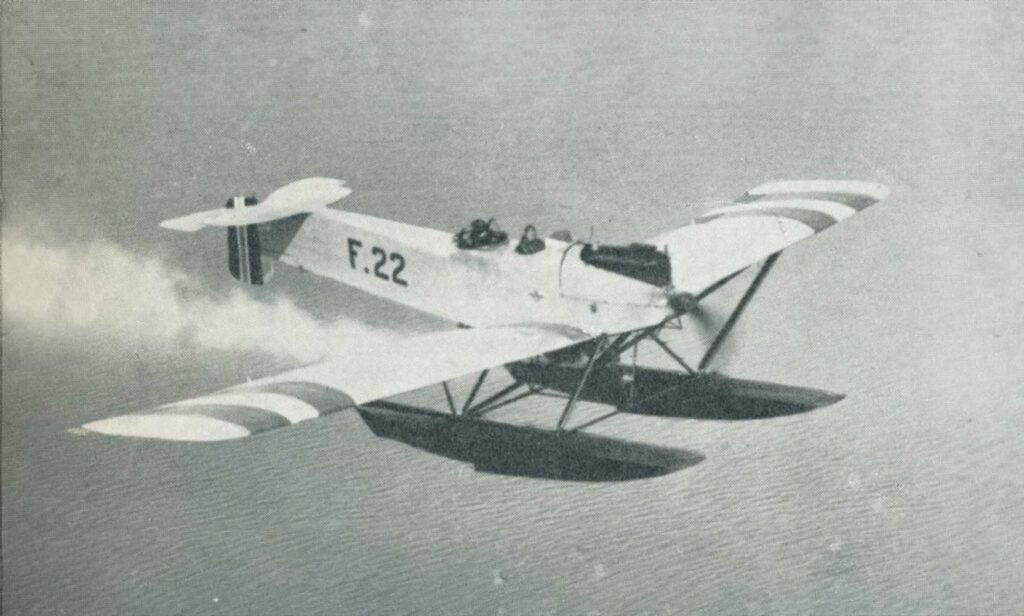A WWI-era German seaplane, the Hansa-Brandenburg W.33 was known for maritime reconnaissance and anti-submarine warfare. The Hansa-Brandenburg W.33 was a versatile floatplane that served primarily in the maritime reconnaissance role during the latter part of World War I. This article explores its development, design features, performance specifications, and military service, underscoring its contributions and limitations.
Amid the First World War, naval aviation became a crucial factor in maritime reconnaissance and anti-submarine operations. The Hansa-Brandenburg W.33 was a product of this era, developed to provide the German Imperial Navy with an aircraft capable of patrolling the North Sea and beyond.
History of the Development of the Hansa-Brandenburg W.33
In the context of World War I, with the advent of submarine warfare, the need for effective maritime patrol aircraft became evident. Naval engagements were no longer confined to surface ships, and the ability to scout vast stretches of ocean from the air became a strategic necessity.
The Hansa-Brandenburg W.33 was designed by the German aircraft manufacturer Hansa-Brandenburg, led by the talented Ernst Heinkel, who would later become famous for his own aviation designs. This floatplane was conceived as an improvement over its predecessor, the W.12, with the objective of possessing a greater range, payload capacity, and overall stability in the challenging conditions of North Sea operations.
The program was initiated during the war, responding to the Imperial Navy’s request for a robust and capable aircraft that could withstand the rigors of maritime use. The W.33 first flew in 1918, but with the war ending in November of that year, the aircraft did not see as much action as it might have had it been introduced earlier.
Design of the Hansa-Brandenburg W.33
The W.33 featured a conventional biplane design with two main floats for sea operations and a wingspan of 14.8 meters (48 feet 6 inches). It had a length of 9.92 meters (32 feet 6 inches), which was typical for seaplanes of that era. The use of wood and fabric in its construction was a standard practice at the time, but the W.33 stood out for its robustness in sea operations.
One design innovation was its thick wings, which provided high lift while remaining relatively immune to warping, a common problem in wooden aircraft exposed to marine environments. The biplane structure also allowed for strong wing bracing, critical for operations in high winds and choppy seas.
However, the W.33 was not without drawbacks. Its wooden structure required continual maintenance to protect against the elements, and its biplane design created significant drag, limiting its maximum speed.

Performance of the Hansa-Brandenburg W.33
Powered by a single Basse und Selve BuS.IVa engine of 150 kW (200 hp), the W.33 could achieve a top speed of 160 km/h (99 mph), with a service ceiling of 3,000 meters (9,842 feet). It had a respectable range of 800 kilometers (497 miles), enabling it to conduct long patrols over open waters.
When compared to other seaplanes of its time, the W.33 was not the fastest, but it provided a good balance of speed, range, and operational endurance, which was valued for reconnaissance and anti-submarine patrols.
Military Use and Combat of the Hansa-Brandenburg W.33
The armament of the W.33 typically consisted of one or two 7.92 mm machine guns and it had the capability to carry a small payload of bombs for anti-submarine warfare. Although it arrived late in World War I, the W.33 served in the conflict’s final months and was involved in patrolling the North Sea and Baltic Sea against allied submarines.
Post-war, the W.33’s design was utilized by several countries, including Norway, Finland, and Estonia, highlighting its success as a military export. Some were still in use into the 1930s, a testament to their durability and design effectiveness.
The aircraft was eventually superseded by more advanced monoplane designs as technology progressed, and it was phased out in favor of newer, more capable aircraft.
The Hansa-Brandenburg W.33 played a significant role in the early days of naval aviation, providing the German Imperial Navy with a sturdy and reliable platform for maritime reconnaissance. Its design and performance characteristics reflected the technological state of the era and set a precedent for future seaplane development. Despite its brief combat service, the W.33’s legacy extended beyond World War I, influencing aircraft design in the interwar period and serving multiple nations in the years following the conflict.
Back to the Seaplanes section.